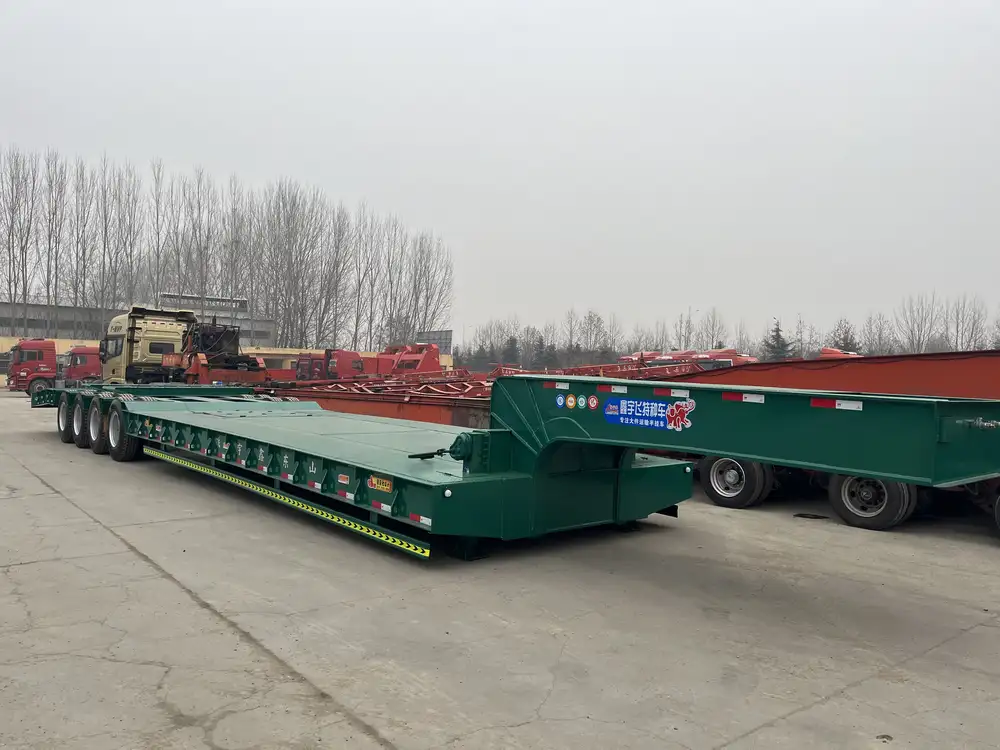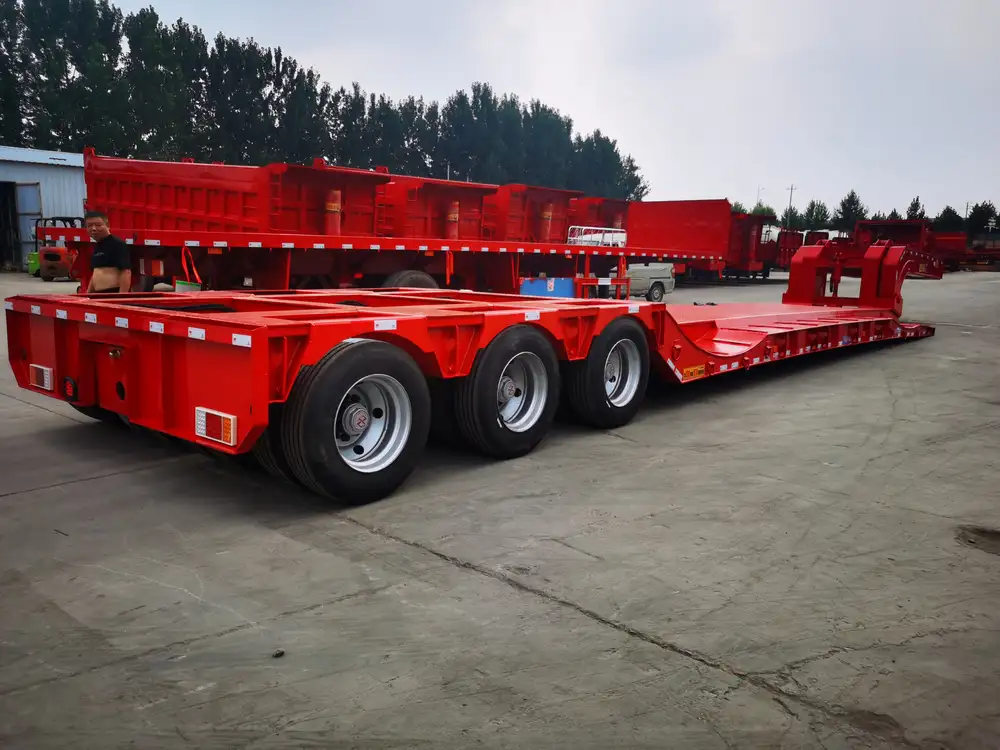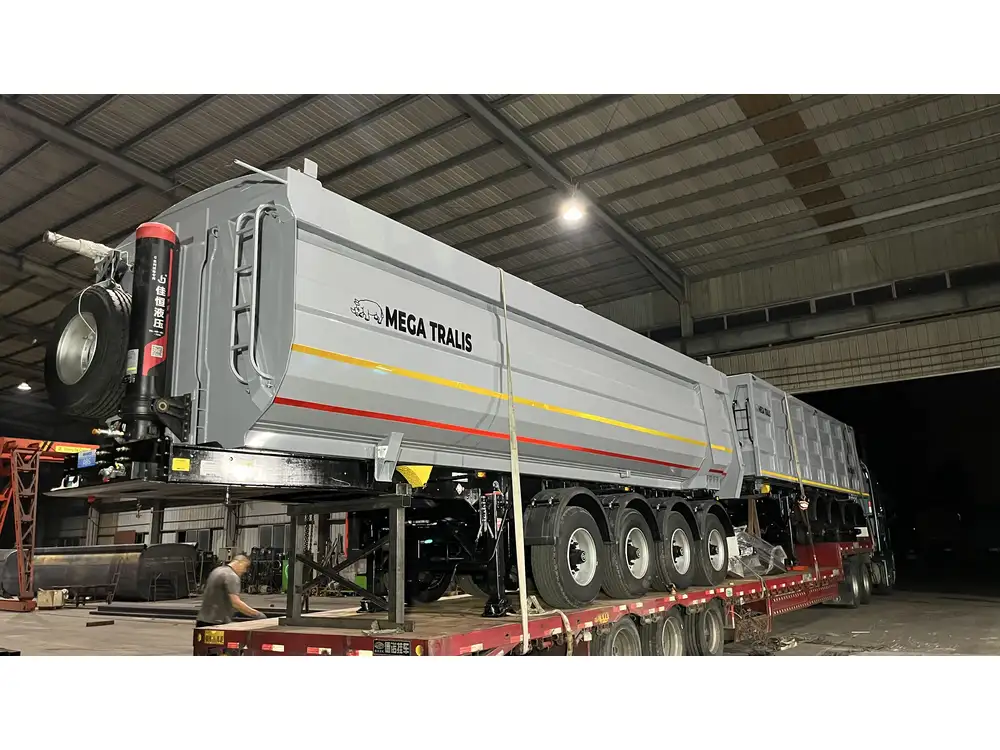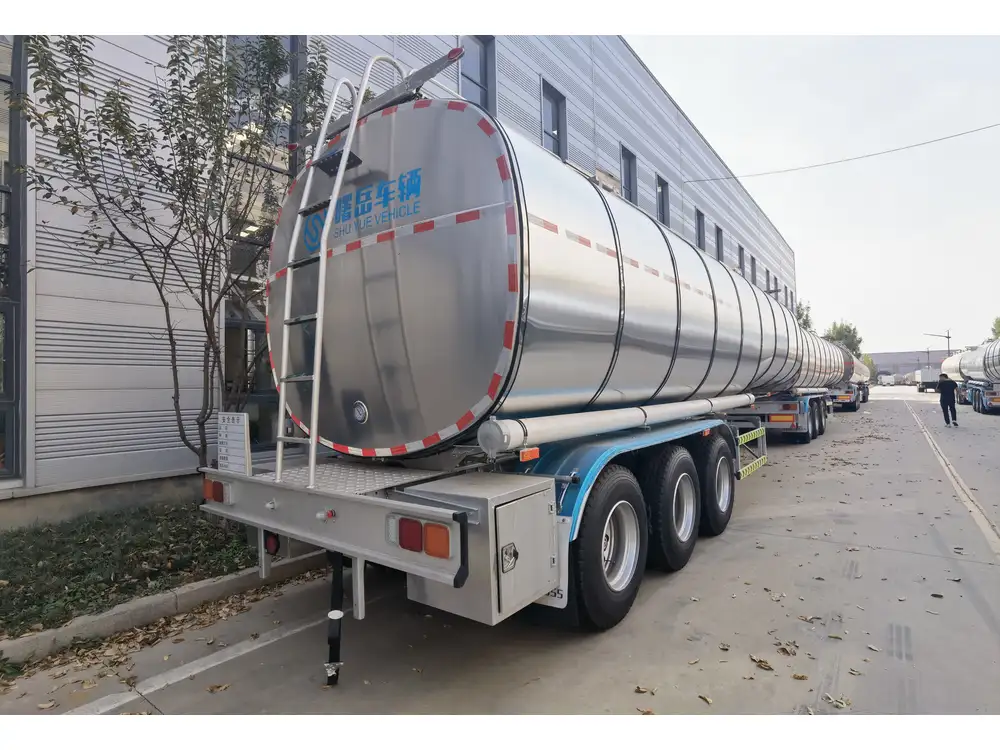When considering the vast expanse of transportation logistics, one question frequently arises: how wide is a 53-foot flatbed trailer? This query, though seemingly straightforward, opens the door to a multitude of complexities regarding dimensions, regulations, and applications.
To maximize usability and ensure robust understanding, let’s delve into the nuanced details behind the standard dimensions of trailers, particularly focusing on the 53-foot flatbed variety, while also considering the practical implications and requirements in the transportation industry.
Understanding Trailer Dimensions
Standard Dimensions of a 53-Foot Flatbed Trailer
| Measurement Type | Description | Inches | Feet |
|---|---|---|---|
| Length | Standard trailer length | 636 | 53 |
| Width | Standard width | 102 | 8.5 |
| Height | Typical loaded height | Varies | 8.5 to 14 |
| Deck Height | Distance from ground | Varies | 4 to 5 |
The 53-foot flatbed trailer is designed to maximize cargo space while maintaining adherence to freight regulations. The standard width is typically 102 inches (8.5 feet). This dimension allows for optimal load capacity and stability during transit.
The height of a flatbed trailer can fluctuate based on load characteristics, generally ranging from 4 to 5 feet for the deck height, while the overall height can reach between 8.5 feet to 14 feet when considering the cargo and trailer configurations.

Variability in Trailer Width
While 102 inches is the common width for semi-trailers, variations may occur. Regulations can differ across states and municipalities, particularly concerning oversized loads. It is critical for transport companies to stay updated on local regulations to avoid penalties and delays.
Common Width Ranges:
- Standard Width: 102 inches (8.5 feet)
- Legal Overwidth: Up to 120 inches (10 feet) with certain permits
- Special Permits: Dimensions vary widely depending on transport needs and state regulations.
Practical Applications of 53-Foot Flatbed Trailers
Understanding the width and dimensions of flatbed trailers is paramount, especially for manufacturers, logistics companies, and operators. The applications of a 53-foot flatbed trailer range broadly across numerous industries, including:
Construction
Flatbed trailers are frequently used to transport heavy materials and equipment, thanks to their open design. The ability to easily load and unload items using forklifts or cranes makes them an invaluable resource on construction sites.

Freight Transportation
In freight transportation, space and load distribution are key considerations. A 53-foot flatbed allows for a spacious platform to carry bulky cargo like machinery, building materials, and large goods that may not fit in traditional enclosed trailers.
Agriculture
The agricultural sector often utilizes flatbed trailers to transport large, often irregularly shaped objects such as bales of hay and farm equipment. The width facilitates the efficient transportation and drying of crops without hindrance.
Oil and Gas Industry
In remote job sites, flatbed trailers can haul heavy pipes and drilling equipment crucial for operations in the oil and gas sectors. The robust design allows them to handle substantial weights while ensuring maximum stability.

Regulatory Standards and Safety Compliance
Awareness of regulatory standards is essential for those involved in the use and operation of flatbed trailers. Each dimension can hold specific compliance requirements to meet federal and state regulations.
Federal Regulations
The Federal Motor Carrier Safety Administration (FMCSA) oversees regulations concerning trailer dimensions, which inform transport companies about what is permissible under federal law:
- Length: Standard requirements for tractor-trailer combinations suggest not exceeding a total length of 70 to 75 feet.
- Width: Typically, widths exceeding 8.5 feet require special permits and caution in navigation.
State-Specific Regulations
Depending on transport routes, specific states may impose additional restrictions:
- Certain states permit larger dimensions with pre-approved permits.
- Local jurisdictions often have rules differentiated from federal laws concerning width and height.

Key Considerations When Choosing a Trailer
Load Type
The choice of a flatbed trailer extends beyond mere dimensions. The following aspects must also be considered:
- Weight Distribution: Flatbeds allow for diverse weight loads, ensuring that items are secured harmoniously for stability.
- Cargo Types: Depending on whether transporting building materials, machinery, or agricultural products, understanding the load type is essential for determining the necessary trailer configuration.
Loading Equipment
The use of appropriate loading equipment can significantly impact the efficiency of operations. Flatbed trailers can leverage:
- Forklifts: Perfect for moving heavy pallets and machinery.
- Cranes: Necessary for lifting oversized equipment and ensuring a secure placement on the trailer.

Compliance with Local Transport Laws
Every transport operation must engage in due diligence regarding local laws, ensuring that all necessary permits are obtained. Non-compliance can lead to hefty fines and delays, impacting overall operational efficiency.
Analyzing Problems Related to Flatbed Trailers
Flatbed trailers, while advantageous, present their own challenges that users must be cognizant of, particularly those involved in transportation and logistics.
Risks of Overloading
- Legal Penalties: Overloading beyond allowed weight can lead to fines.
- Safety Hazards: An overloaded trailer might sway during transport, increasing the risk of accidents.

Weather and Environmental Challenges
Transporting goods with a flatbed requires careful consideration of:
- Wind Resistance: Open designs can facilitate wind drag, impacting fuel efficiency and stability.
- Rain and Moisture: Exposed cargo can suffer damage in inclement weather.
Acquisition Costs
Although flatbed trailers provide utility, procurement costs can be substantial, necessitating careful financial planning.
| Cost Category | Estimated Range |
|---|---|
| New Trailer Purchase | $20,000 – $50,000 |
| Used Trailer Purchase | $10,000 – $25,000 |
| Trailer Maintenance | Varies annually |
Investing in trailers involves not only the initial purchase price but also maintenance, insurance, and operational costs.
Conclusion: The Importance of Understanding Trailer Dimensions
In summary, a thorough understanding of how wide a 53-foot flatbed trailer is, along with its associated dimensions, helps in making informed decisions for various industries reliant on transportation logistics. This knowledge is imperative not only for compliance and safety but also for optimizing operational efficiency.
An informed approach towards trailer selection can significantly impact cost-effectiveness, safeguarding against both legal repercussions and operational inefficiencies. Ultimately, an enriched grasp of these fundamental aspects can empower manufacturers, logistics companies, and operators alike to streamline processes and improve productivity within their respective fields.
By ensuring that every operational aspect is aligned with industry standards and regulatory practices, stakeholders can navigate the complexities of commercial transportation with greater certainty and strategic foresight.



